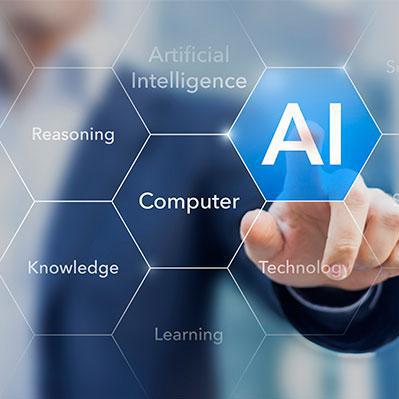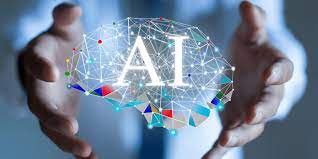Whats Trending in Artificial Intelligence?
If you are looking for the latest trends in artificial intelligence, read this article. You’ll learn about Emotional AI, Cloud-based services, Machine learning, and IoT. All of these technologies are revolutionizing the way we work and live. Here are some of the most important ones to watch out for in 2022.
IoT
AI and IoT are closely related technologies. AI is becoming an integral part of all industries. From sales and marketing to customer service, AI systems are being integrated into every major department in businesses. In fact, they are already being used in some of the biggest companies in the world. For example, one of the largest AI companies in China is building CCTV systems that recognize a rising physical heat level and identify non-lockdown residents based on a built-in face recognition system. In the United Kingdom, a similar surveillance system is being used in Oxford.
The Internet of Things is a network of interrelated computing devices that can sense and accumulate data without human interaction. Artificial Intelligence is about developing smart, intelligent machines. These machines will be equipped with sensing, actuation, data storage, and processing capabilities. Both technologies are driven by engineering goals and can be seen as a stepping stone to the future of the internet. If you’re interested in making your home or office smarter, you’ll have to understand the differences.
AI and IoT technologies can work together to increase productivity. IBM’s Institute for Business Value published research on the integration of IoT and AI in early 2018. The report can be downloaded here. With more data comes better predictions. This technology can improve the safety of equipment and power consumption. It can also improve the user experience and create new business models. Its application potential is endless. IDC’s research highlights several use cases and useful applications across industries.
IoT solutions can improve healthcare services by monitoring patients remotely and ordering medical products. They can also improve quarantined patients by measuring respiratory rate, air flow, and lung sounds. They can even improve invasive medical devices, like hospital beds. IoT solutions also improve monitoring of mild COVID-19 patients and help their recovery. However, these technologies aren’t yet fully developed. Further, they are just beginning to gain traction.
Machine learning
If you are interested in artificial intelligence, you may have heard of machine learning. Using machine learning techniques, computer programs can learn without the need for human supervision. For example, a chatbot trained to read Twitter conversations can recognize offensive language. Using this method, computers can improve their performance by learning from the experience of other users. Machine learning algorithms start by collecting data, which can be of any kind. The more data they have, the better they will get.
But before businesses can make use of machine learning, they must first ensure that they have a large volume of data. Nevertheless, it is not just the quantity that is important – it is also the quality. Unstructured or disorganized data will not provide any business insights. Additionally, machine learning requires fresh data, as old data may not be relevant to the current trends or predictive value. This is where proper planning becomes crucial.
The importance of understanding the concept behind machine learning is critical for a company’s future success. The use of machine learning is becoming increasingly popular, and many companies are starting to adopt it to improve their business processes. According to a Deloitte survey, 67% of companies are currently using machine learning in some form. The use of machine learning is increasing as a way to unlock new value and improve efficiency.
One key reason why machine learning is trending in AI is the democratization of AI. With the growth of cloud computing services and AI tooling, the use of AI technology is becoming less expensive and easier for ordinary business users. Moreover, popular cloud providers now offer prebuilt machine learning algorithms and easy-to-use interfaces. This democratization of AI will allow more people to create AI-based models. This will enable faster innovation and ensure accuracy and reliability from subject matter experts.
Emotional AI
Emotion AI is a type of artificial intelligence that collects signals about human emotions, including perceived thoughts and behavior. It can identify subtle changes in human behavior, such as elongated pauses and volume changes. These systems can catalog human voices and understand how these changes can influence the meaning of words. As humans interact more often with machines, this type of AI could augment human operators and add valuable layers of engagement to conversations.
Many industries are exploring this technology to make their digital products more personalized and more engaging. Advertising and retail are two areas where emotional AI is being used. Emotion AI helps marketers understand consumers’ moods and tailor advertisements to appeal to them. Many public spaces already have cameras that can detect facial expressions, and AI algorithms are now being used to understand what these expressions mean. The Chinese government is currently working on ways to use AI to predict crime and predict consumer behavior.
The first step towards integrating this technology into computers is figuring out how to make them understand human emotions. Emotions are complex and difficult to program. However, if a computer is able to recognize emotions, it will be a huge asset to the technology industry. Artificial intelligence is evolving rapidly and a more complex technology could result in more intelligent products. While the technology is still in the early stages, it shows promising signs.
While some fear that emotional AI could harm humans, the technology may have significant benefits. For instance, AI that understands a worker’s feelings could help them decide whether to stay in a role. But there are some potential disadvantages to using AI to analyze emotional responses. Despite the benefits, emotional AI may reinforce stereotypes. The majority of first-line police officers and detective supervisors are male, and AI may struggle to read the emotional responses of female recruits.
Cloud based services
Traditionally, AI projects required large datasets, which are either structured or unstructured, or both. These large sets require powerful CPUs and GPUs to run the computation required to create accurate models. However, cloud systems offer an ideal combination of compute power and storage space. Cloud services enable serverless computing, batch processing, and container orchestration. Furthermore, cloud services do not require a separate infrastructure and are generally preconfigured.
AI enables smart automation. By applying predictive algorithms, AI solutions can help companies detect trends and patterns in data. Cloud artificial intelligence elevates data analysis by studying historical and current data and applying best practices and standards. Automated data analysis also eliminates human errors and improves the speed of data analysis, allowing organizations to make better decisions. Cloud services for artificial intelligence help organizations make decisions faster and more accurately than ever.
Cloud computing has been around for quite some time. In 1996, a Compaq internal document referred to cloud computing. The term was not officially coined until 1993. It wasn’t until 2006, however, that the term cloud became more widely known. In 2006, Amazon began to popularize modern cloud computing. There are three main cloud deployment models, Infrastructure as a Service (IaaS), Platform as a Service (PaaS), and Software as a Service (SaaS). Any of these can be used to deploy AI workloads. Regardless of the deployment model, you should choose the appropriate cloud service provider.
AI tools also enhance cloud workloads across customer care, marketing, ERP, and supply chain management. AI-powered data analytics tools allow enterprises to analyze large amounts of data quickly. AI tools enable IT teams to embed AI tools in Google Cloud Stream analytics to detect and predict maintenance scenarios. AI tools are becoming more powerful than ever, and cloud computing can help companies scale up their AI capabilities. They can help their AI projects grow and transform in a way that only technology can enable.
Supply of talent
The supply of talent in artificial intelligence (AI) is not evenly distributed. While highly trained workers and key resources tend to cluster around urban centers, this also limits the number of jobs available for AI specialists. For instance, less than a quarter of top AI talent is employed by the same company that trained them. And nearly a third of AI talent works outside of their home country. This is an extremely complex picture, but it allows us to observe the flow of talent and identify hotspots for AI.
While there is an uneven distribution of talent in AI, some countries show more growth than others. The United States remains the leading talent magnet, with around half of all STEM undergraduates coming from the U.S. or UK. Germany, France, Japan, and the Republic of Korea also had significant talent inflows. Interestingly, some countries experienced greater talent outflows, such as Canada, the Netherlands, and the United Kingdom, which all saw higher levels of post-graduate migration than the average. Meanwhile, Singapore, which had a greater percentage of foreign-born AI experts, had an equal outflow of talent.
While AI is an increasingly important area of expertise for companies, the shortage of qualified candidates is especially acute in advanced AI adopters. A recent survey by Deloitte showed that almost a quarter of respondents had trouble attracting talent for AI projects. Thankfully, companies have several alternatives to attract top talent, including hiring university graduates who are skilled in AI and retraining internal resources to be more AI-oriented. While start-ups are mostly reliant on external AI experts, seasoned AI adopters are more likely to leverage internal resources.




